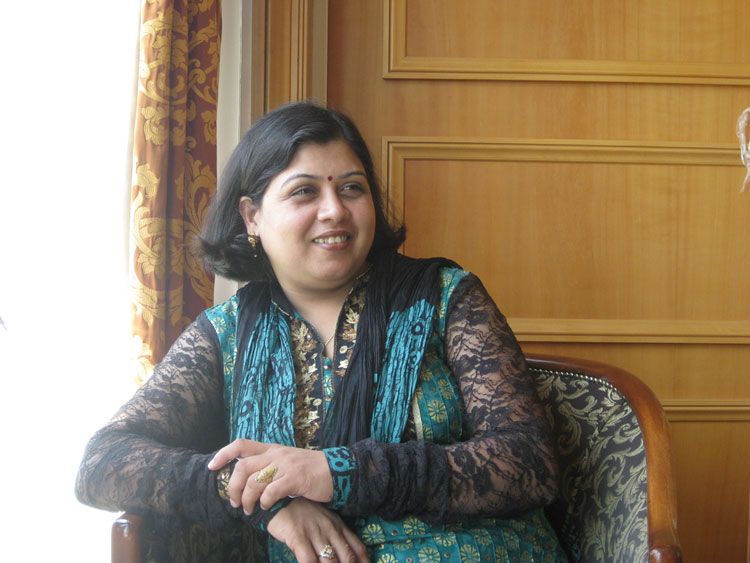Throughout the last week the story of how the United Airlines mal-handled the passenger who refused to surrender his seat to accommodate the Airlines own crew exploded in the media with an endless parade of the video clips showing how that poor passenger was dragged out of his seat, hauled out fighting with a bloodied face, and its aftermath that showed United Airlines egregious disregard for the passenger(s). The CEO further compounded this ignominy by tweeting his apology on how the airline re-accommodated his passenger and why it was not their fault. This episode was lampooned on almost every late night show and even on Saturday Night Live (SNL) last weekend.
That week the airline stock lost nearly a billion dollars in its cap, with a bottomless pit of various lawsuits that are now showing up on all fronts. Four people were fired and many suffered career setbacks for merely being there on the scene. With its huge presence in China many there have openly rebelled against United Airlines, causing it to lose its brand, ongoing business, and endless hurt.
Now that sufficient time as passed since that incident, all the back story about that ugly episode has surfaced and it puts the airline in even worse light than it did as the drama was unfolding, both in the mainstream media and on the social media. Here are some of the more juicy details that got left out in the medias rush to jump on the story:
- The flight was not overbooked, but after everyone was boarded the airline decided that it needed to transport four of its own crew to where this flight was headed to staff some other flight there.
- The Gate Agent should have known these staffing needs in advance, allowing them to stop the four most recently booked passengers from ever boarding that flight. This would have allowed the four to fly to where they would be needed.
- The ground crew should have been empowered to make those four bumped passengers, still on the ground, to make as comfortable as possible by giving them equitable compensation.
- Relentless cost cutting under the current CEO started when the previously fired CEO Jeff Smisek was replaced by the current CEO, who is even more disengaged than his predecessor.
- When the CEOs focus devolved to relentless and indiscriminate cost cutting employees lost their faith in the airline and they became increasingly more indifferent to customer service and how the airline functioned.
When management imposed arbitrary and relentless cost cutting without listening to those on the front lines no one that comes in contact with the customer cares anymore and the airline continues to suffer the wrath of its customers and indifference of its employees. Some examples:
- Unhappy flight attendants routinely turn up the heat in the cabin. Why? If passengers are knocked out they have less work passing out peanuts and drinks. The next time you think you are coming down with something, ask the crew to turn down the heat.
- Pilots have lost virtually every financial incentive to do their best. Now, many purposely slow down flights to get bumped into overtime. If they make a plane a half-hour late that equals about $70.00 each. The most cynical pilots figure out how to time a flight so that it arrives as late as possible without getting cited.
- The ramp crew slows down the loading of baggage to delay the flight and support the flight crew and their overtime. They find endless ways to delay flights causing untold grief to flying passengers.
So, this is how the managements myopic approach to saving money backfires on the company. In this case of United Airlines the price of this fiasco alone (not the spread effects cited above of the crews reaction to cost cutting, as that cost is incalculable.)
United may even go out of business as a result of this single episode.
So, what are some of the lessons from this most recent example of mismanaged customer situation? Here is my take:
- The company must decide what it important to its brand: Customer Experience, cost, or something else. Once it decides on the priority it must communicate that clearly to all its employees with specific authorities given to its employees to empower them to deal with each situation with impunity. In this case if the airline had empowered its crew to compensate bumped passengers with a much higher limit (currently it is $1,350), someone would have volunteered. Delta Airlines last week authorized its senior crew to offer up to $10,000 to bump a passenger if the situation required it.
- Employees must feel safe to error on the side of customer needs than they do on the side that benefits the airline (or the company). If they make a wrong judgment call they should not be punished unless they exhibit a pattern on abuse.
- If cost cutting is paramount consult those on the front lines on how best to do it. I once talked to a bunch of flight attendants when I was consulting for a major airline and showed them what the management had in plans to cut costs. They simply laughed and told me that those measures would cost them even more because the management had not taken into account the intended consequences of those cuts (similar to the items in those three bullets above). Instead, they thoughtfully suggested to me the measures that would cut costs without ill side effects. After some research I found ALL their suggestions to be on spot and the airline changed its course after my presentation to its management.
- When something goes wrong take immediate responsibility and disclose all the facts as soon as you can get them. On this front alone, United Airlines gets in F.
- Keep an open line of communication with the front lines to stay in touch with the Customer Experience. Do not assume what experience you are creating. Ask those who see it first hand!
None of these suggestions require an MBA to appreciate and to implement. But despite that the Uniteds management gets an F from me and hope that other companies, not just other airlines take this learning to heart!
Good luck!
| About Author | |

|
Dilip has distinguished himself as LinkedIn’s #1 career coach from among a global pool of over 1,000 peers ever since LinkedIn started ranking them professionally (LinkedIn selected 23 categories of professionals for this ranking and published this ranking from 2006 until 2012). Having worked with over 6,000 clients from all walks of professions and having worked with nearly the entire spectrum of age groups—from high-school graduates about to enter college to those in their 70s, not knowing what to do with their retirement—Dilip has developed a unique approach to bringing meaning to their professional and personal lives. Dilip’s professional success lies in his ability to codify what he has learned in his own varied life (he has changed careers four times and is currently in his fifth) and from those of his clients, and to apply the essence of that learning to each coaching situation. After getting his B.Tech. (Honors) from IIT-Bombay and Master’s in electrical engineering(MSEE) from Stanford University, Dilip worked at various organizations, starting as an individual contributor and then progressing to head an engineering organization of a division of a high-tech company, with $2B in sales, in California’s Silicon Valley. His current interest in coaching resulted from his career experiences spanning nearly four decades, at four very diverse organizations–and industries, including a major conglomerate in India, and from what it takes to re-invent oneself time and again, especially after a lay-off and with constraints that are beyond your control. During the 45-plus years since his graduation, Dilip has reinvented himself time and again to explore new career horizons. When he left the corporate world, as head of engineering of a technology company, he started his own technology consulting business, helping high-tech and biotech companies streamline their product development processes. Dilip’s third career was working as a marketing consultant helping Fortune-500 companies dramatically improve their sales, based on a novel concept. It is during this work that Dilip realized that the greatest challenge most corporations face is available leadership resources and effectiveness; too many followers looking up to rudderless leadership. Dilip then decided to work with corporations helping them understand the leadership process and how to increase leadership effectiveness at every level. Soon afterwards, when the job-market tanked in Silicon Valley in 2001, Dilip changed his career track yet again and decided to work initially with many high-tech refugees, who wanted expert guidance in their reinvention and reemployment. Quickly, Dilip expanded his practice to help professionals from all walks of life. Now in his fifth career, Dilip works with professionals in the Silicon Valley and around the world helping with reinvention to get their dream jobs or vocations. As a career counselor and life coach, Dilip’s focus has been career transitions for professionals at all levels and engaging them in a purposeful pursuit. Working with them, he has developed many groundbreaking approaches to career transition that are now published in five books, his weekly blogs, and hundreds of articles. He has worked with those looking for a change in their careers–re-invention–and jobs at levels ranging from CEOs to hospital orderlies. He has developed numerous seminars and workshops to complement his individual coaching for helping others with making career and life transitions. Dilip’s central theme in his practice is to help clients discover their latent genius and then build a value proposition around it to articulate a strong verbal brand. Throughout this journey, Dilip has come up with many groundbreaking practices such as an Inductive Résumé and the Genius Extraction Tool. Dilip owns two patents, has two publications in the Harvard Business Review and has led a CEO roundtable for Chief Executive on Customer Loyalty. Both Amazon and B&N list numerous reviews on his five books. Dilip is also listed in Who’s Who, has appeared several times on CNN Headline News/Comcast Local Edition, as well as in the San Francisco Chronicle in its career columns. Dilip is a contributing writer to several publications. Dilip is a sought-after speaker at public and private forums on jobs, careers, leadership challenges, and how to be an effective leader. |
Website: https://dilipsaraf.com/lessons-from-the-united-airlines-2/
Disclaimer: Please use this channel at your own discretion. These articles are contributed by our users. We are not responsible or liable for any problems related to the utilization of information of these articles.











